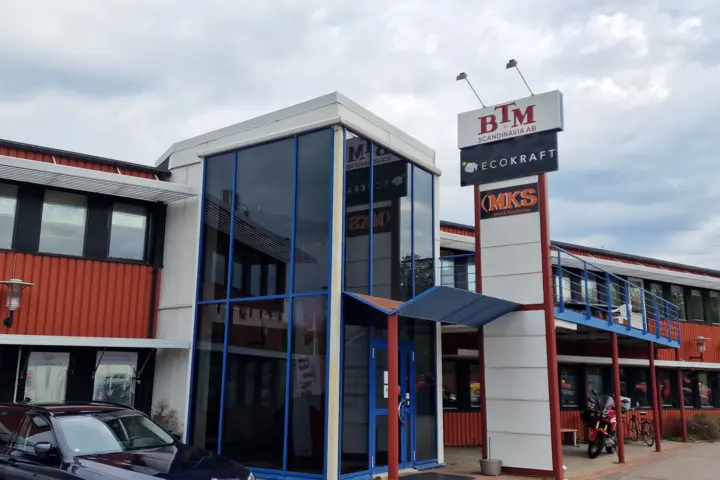Efficient and residue-free joining of sheet metals
From an innovative Swedish HVAC manufacturer, BTM got a request – via end user Steinadler AB – for the production of a ventilation housing which to date was assembled by means of spot welding and blind rivets. The task is to join six sheet metals of partly different thickness with 34 clinch joints in a durable, residue-free and energy efficient way. Thanks to the cooperation with Kistler, BTM Scandinavia was able to refurbish a present spot welding installation to electromechanical clinching.
“Dragiza Tosovic, the CEO of Steinadler AB, explicitly asked for the newest and best technology for production of ventilation housings – taking into account both economic and ecologic aspects. So it was a perfect opportunity for the new NCFC servo press from Kistler. With its low weight of 46 kg, compactness and maXYmos process monitoring it is best suited for robot application.”
Bo Claesson, Director BTM Scandinavia AB
The partially automated assembly takes place in a robot production cell with a rotary plate for reliable delivery of new sheet metal parts for the ventilation housing. At the robot arm, the compact NCFC servo press from Kistler in the version with a nominal force of 55 kN is applied. The force displacement controlled NC joining system with integrated sensor delivers accurate clinching also on the robot. Quality assurance is supplied by the maXYmos NC monitoring system from Kistler which relates to the production unit. It controls, visualizes and monitors the clinching process and makes production data accessible for higher-level software systems.
Predestined for robot arm application
Volker Eilmannsberger, Development Engineer Joining Systems at Kistler, explains: „The main challenge in this application was to realize 34 clinch joints in a cycle time of one minute and twenty seconds. In addition to that there are multiple movements of the part in order to reach all processing positions. This parallel operation also has an influence on the cycle time. Thanks to the NC functionality of our joining system the different traverse paths could be optimized relatively simply. So it was possible to pivot around present obstacle contours and to reach the required cycle time.”
Thanks to the compactness and low weight of the NCFC servo press the system is particularly suited for robot automation which is often applied in the automotive industry. Efficient integration is fostered by the new hybrid cable technology of the NCFC joining modules: energy, signals and data are transmitted via a single hybrid cable for the drive technology.
The proposed solution convinced Steinadler in a way that they want to rely on electromechanical clinching with systems from BTM and Kistler instead of the spot welding used to date. Another production cell for ventilation housings is already in process at Steinadler.









![BTM Scandinavia uses Kistler NCFC joining system to join ventilation housing by clinching [object Object]](https://kistler.cdn.celum.cloud/SAPCommerce_Document_Preview/961-672e.webp)